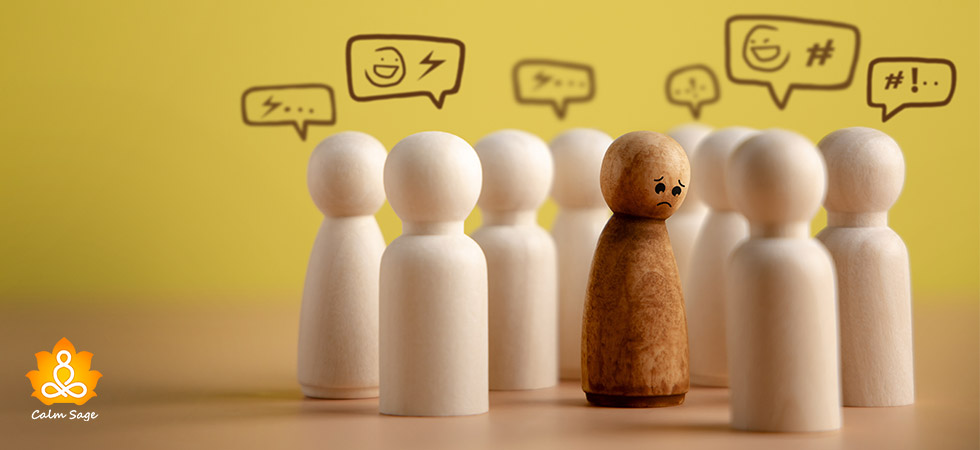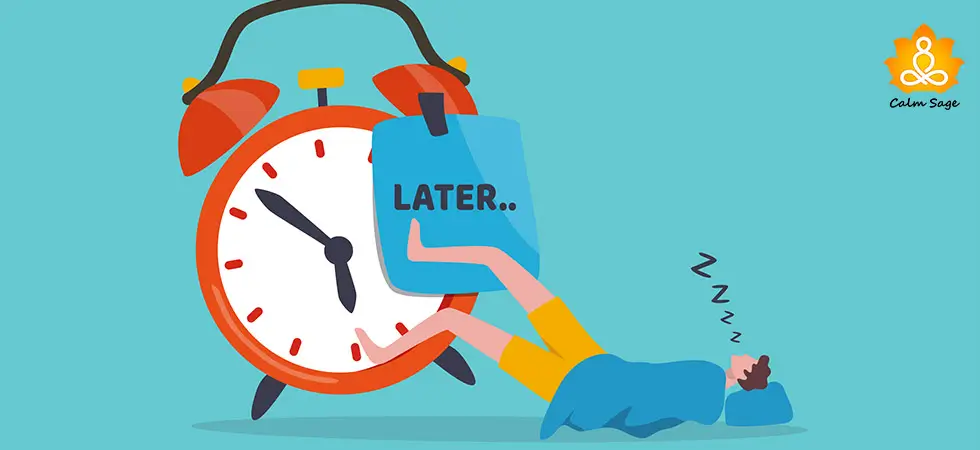Guide-Me: What Are The Different Types of Bullying

Bullying is way more affecting than people think about it! Prior, bullying was only limited to name-calling or physical bullying, but nowadays, it can be extended up to gossiping or even being excluded from a group! The fact is that there can be different types of bullying and some bullies use different tactics that instead show them as victims.
Therefore, it is really important to uncover some facts related to bullying so that you or your child can get quipped to different situations. In this blog, let’s learn about different types of bullying, types of bullies, and how to deal with bullies.
This blog covers:
- What is Bullying
- Different Types of Bullying
- Signs of Bullying
- Types of Bullies
- Causes of Bullying
- Mental Health Impacts of Bullying
- How to Deal with a Bully?
- How to Cope with Bullying?
- Key Takeaway: Getting Help
What is Bullying?
Any type of violence that includes intentional, power imbalance, repetition, or unwanted aggressive behavior can be called bullying. Bullying can be identified as the power imbalance between the bully and the victim.
When the power imbalance is bigger between the bully and victim, it becomes more discerning as it involves fewer facts such as ability, knowledge, intelligence, popularity, and other factors that make the victim feel more embarrassed. Bullying is one of the extensive issues that impact bullies and victims negatively.
To put it in a nutshell, “Bullying is continuous misuse of power in relationships through social, physical, or verbal behavior that causes psychological or physical harm.”
Different Types of Bullying
There are 6 different types of bullying, let us read about them in this section:
1.Cyberbullying
We are living in a tech-savvy world and we’re more connected to strangers than before. We are connected with people through online forums, group chats, and social media. Unfortunately, the major drawback of the tech-savvy world is cyberbullying wherein people are hiding behind the screen and targeting victims.
The fact is that cyberbullies are those people who might not act in real life but are using the internet as a resource to comfort their traumas. Research shows that around 59%of teens in the USA were cyberbullied in 2018. Cyberbullying can be seen in the form of embarrassing comments, slander, harassment, stalking, and more. Cyberbullying includes:
- Making rude or hurtful comments
- Posting insults
- Sending mean or hurtful texts
- Sending personal information
- Threatening or bullying someone through groups or personal chats
2.Emotional Bullying
Emotional bullying can also be referred to as social bullying as the actions directly harm the victim’s reputation and relationship with others. It can revolve around excluding someone from the group intentionally, spreading rumors, embarrassing someone in public, and more.
One of the common examples of this type of bullying is the “mean girls” that are supposed to be present in every class. Emotional bullying includes:
- Embarrassing someone publicly
- Excluding someone purposefully
- Spreading gossip or rumors about someone intentionally
- Telling others not to interact with someone
3.Physical Bullying
Physical bullying is one of the common types of bullying that mostly happens out of aggression. When someone is involved in physical assault or breaking someone’s belongings, it can lead to physical bullying.
Physical bullying can also be perpetrated by a group that is stronger or bigger than the target. Studies show that males are more involved in such types of bullying. Physical bullying includes:
- Being involved in inappropriate gestures
- Breaking someone’s things
- Kicking, hitting, or spitting someone
- Pushing or tripping someone
4.Prejudicial Bullying
Prejudicial bullying revolves around in-person bullying which is mostly targeted at someone’s sexual, religious, ethnic, or racial orientation. Such bullying comes from stereotypical thinking. This type of bullying shows that sexual and ethnic minorities are bullied mostly. Prejudicial bullying includes:
- Devaluing other’s racial background
- Discrediting someone’s cultural or religious practices
- Mocking, intimidating, or belittling someone due to their race
- Shaming or insulting someone’s customs
5.Sexual Bullying
Sexual bullying can be online and in-person. When someone keeps on making sexual jokes, comments, crude gestures, or spreading sexual rumors without someone’s permission, it is known to be sexual bullying.
Sexual harassment and bullying are known to be one of the common types of bullying as a study shows that 81% of females and 43% of males experienced sexual harassment in 2019. Meanwhile, receiving, sending, or sexting also comes under sexual bullying. Sexual bullying includes:
- Making inappropriate comments about someone’s sexuality
- Posting or sending someone’s sexually explicit photos, videos, or messages
- Pressurizing someone to send sexually explicit photos
- Spreading sexual rumors
6.Verbal Bullying
Verbal bullying happens when someone uses written or spoken words to intimidate someone. Verbal bullying is a common type of bullying yet it cannot be easily detected as a bully can easily pass comments or name-calling while sitting in the class.
This makes the victim difficult to prove in front of everyone. This makes the victim more mentally exhausted, stressed, anxious, or depressed. Verbal bullying includes:
- Name-calling
- Making inappropriate comments
- Taunting
- Threatening
- Teasing
Types of Bullies
-
Bully-Victims
Bully victims are the people who were bullied in the past and now they are trying to regain a sense of control and power. This type of bully is commonly seen in teens who think that bullying back can retaliate the pain they hold.
-
Popular Bullies
Bullies with strong egos come under popular bullies. They are a condescending and confident personality that comes with a group of followers. Such bullies have a strong sense of entitlement. They generally thrive on control and physical power.
-
Relational Bullies
Relational bullies are those popular students who make their own rules and want everyone to follow them. Students who do not follow them are excluded, isolated, and ostracized by the whole group. They are compelling at spreading gossip, rumors, name-calling, and putting fake labels.
-
Serial Bullies
Serial bullies are also popular bullies but they are more calculated, controlled, and systematic in their approach. They appear to be charismatic, charming, and sweet to everyone but deep inside they can be very cold and calculative that they can even inflict emotional pain on victims.
Related Read: Why People Bully?
Signs of Bullying
Bullying is always intentional, in order to spot bullying nearby, you can take the help of the below-mentioned signs of bullying that revolves around emotional and behavioral changes:
- Appearance of physical signs like scratches, bruises, or cuts
- Complaints of physical symptoms like nausea, headache, fever, and more
- Constantly trying to get out of school or the workplace
- Depressed, fatigued, teary, or sad expressions
- Increased anxiety or stress
- Lack of concentration in studies or work
- Loss of appetite or development of an eating disorder
- Missing belongings
- Trouble sleeping
Mental Health Impacts of Bullying
Victims or people who are bullied experience a lot of long-term and short-term mental health issues such as social withdrawal, depression, anxiety, lack of concentration, substance abuse, and even suicidal ideation.
Note: If the information presented in this article, triggers suicidal thoughts, we request you to please contact: National Suicide Prevention Lifeline
For support and assistance from a trained mental health advisor, call 988. For emergencies situations, call 911
Additionally, victims are likely to get involved in abuse in romantic relationships, property vandalization, drug abuse, and more in adulthood.
Related Read: Identifying Suicidal Thoughts in Children
How to Deal with a Bully?
If you’re being bullied by someone, know that they are doing so to gain control or power out of your reaction. Therefore, you need to follow the below-mentioned tips or strategies to deal with a bully:
- Work on your strengths: If you’re being bullied by someone constantly, you don’t have to bully them back and do the same. Well, if you really want to show them, they are doing wrong to you, you need to work on your strengths. Use patience as your powerful tool and move to the next strategies.
- Walk away: If you are being sexually, physically, or emotionally bullied, walk away to a safe place and call 911 for your protection.
- Respond mindfully: If you’re being cyberbullied or emotionally bullied, be patient and try to control your emotions in front of the bully. If you’ll give them a reaction, they are likely to gain power or control out of it, therefore, try to stay calm and whatever you plan, do it mindfully, weigh all the points, and react only when you’re in the safe place.
- Collect the proofs: Be it any type of bullying, always make sure to collect the proofs or take screenshots to present them in front of everyone.
- Seek support: After collecting all proofs, reaching a safe place, and working on your strengths, seek support appropriately. If it’s about physical threats or sexual abuse, connect with the police.
Key Takeaway: Getting Help
Being bullied or victimized can upsurge feelings of depression, anxiety, or social isolation. In such cases, you can always connect with a professional to seek the right direction and embark on the journey of healing. To connect with a mental health professional, refer to the below-mentioned links:

Great for a large network of licensed therapists
-
$60 to $90/week, billed every 4 weeks
-
Therapy via messaging, phone, or live video chat
-
Flexible cancellation at any time
20% off your first month

Great for CBT Based therapists
-
$40/week, billed every 4 weeks
-
Therapy via messaging, phone, or live video chat
-
Specialization for CBT based Therapy
20% off your first month

Best for Treatment Plants
-
$60 to $90/week, billed every 4 weeks
-
Therapy via messaging, phone, or live video chat
-
Flexible cancellation at any time
$100 off your first month with code SPACE
I hope this blog helps you understand everything you wanted to know about bullying. For more such content, connect with us through all social media platforms.
Thanks for reading!




















